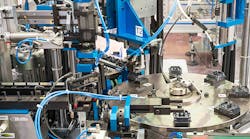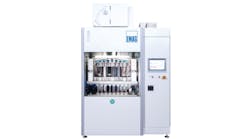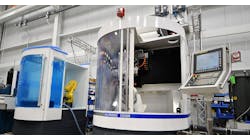Machine-tool demand in the U.S. and Europe regained sustained strength in the first half of 2017, but a wider outlook suggests global industrial demand is still searching for consistency. A global forecast of industrial-machinery production issued by IHS Markit sees growth in the current and near term, pegging worldwide demand at $1.6 trillion, but it also identifies some factors that will make expansion less than smooth. These include local and regional factors like political instability, industrial activity, and commodity and energy prices.
The past two years have seen industrial demand generally undercut by weak energy markets and political uncertainty. Those two factors seem to have been overcome in North America, though early expectations of more industrial expansion and lower corporate taxes under Trump Administration policies seems to have dimmed by mid-summer.
Overall, IHS analyst Teik Chuan Goh predicts near-term (2017) improvements in machinery production revenues and unit shipments. “Overall, momentum in the global economy firmed up in Q4 2016, progressing towards February 2017 due to a number of factors, including the rise of commodity prices – especially oil and gas, metals and crops,” Goh writes in his report.
Noting that machinery sales are closely linked to commodity prices, IHS Markit predicts that revenues for global machinery production will grow 2.2% in Q2 2017, as a result of “broad-based improvements” in most industrial sectors worldwide, as well as overall GDP and Purchasing Managers’ Index performances.
Following on the commodity price improvements, the forecast sees agricultural equipment demand (a highly regional index) rising in China and the U.S.
Of note for North American industrial machinery demand, the outlook identifies leasing as an emerging factor in revenues for machine builders. “Leasing is becoming more common, especially in North America, as companies and farms try to reduce their cash outlay,” Goh observed.
Material handling equipment (conveying and lifting systems) is seen maintaining 4% growth through 2021, but will face competition in the current and near-term from other types of handling systems, namely automated guided vehicles (AGVs) and automated storage and retrieval systems (ASRS).
For the machine tool market in particular, the IHS Markit outlook sees the Chinese regional market (the largest machine tool market in the world) “diverging” according to the end-market being served: operations that depend on heavy-industrial customers will falter in the current term, while the automotive, , electrical, and light industrial sectors are still growing strong. In vehicle manufacturing specifically, increasingly advanced machinery is needed to process newer light metals and composite materials used in newer motor vehicles.
The IHS Markit Machinery Production Market Tracker presents a review of major machinery production in Europe, Asia- Pacific, and the Americas, including annual forecasts, updated quarterly, and presents the value of automation products included in each machine by type.










